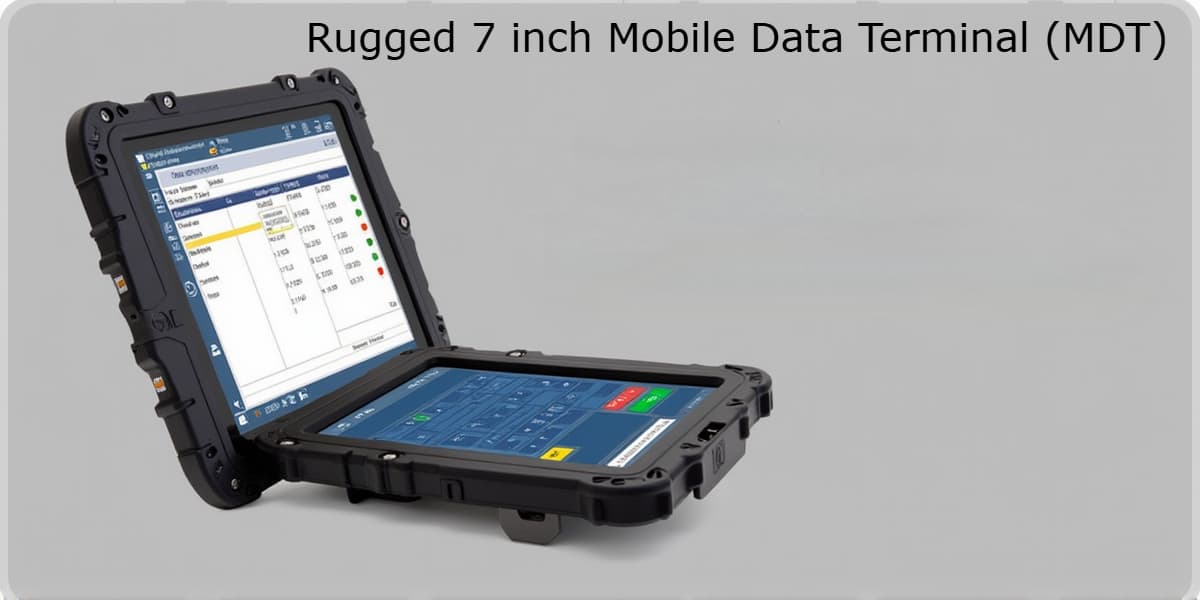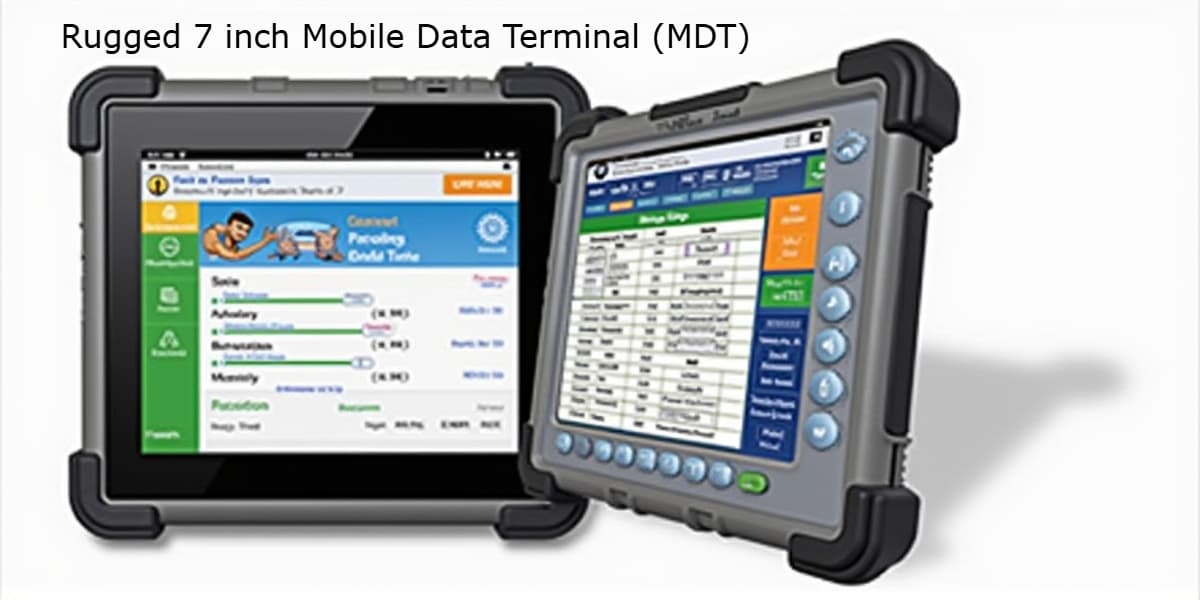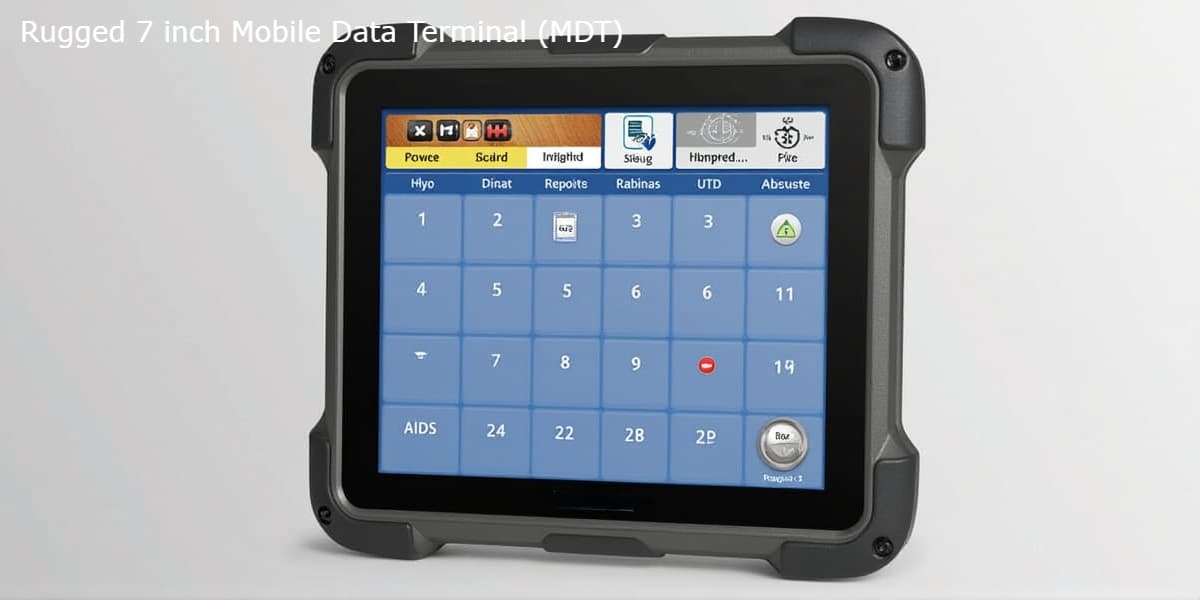Ever wondered how emergency services dispatch critical information on the go, or how logistics companies track their fleets with pinpoint accuracy? Chances are, they’re using a Mobile Data Terminal (MDT). These devices are the backbone of countless mobile operations, offering robust computing power and seamless connectivity in demanding environments. But if you’ve started looking into them, you’ve probably noticed that figuring out the Mobile Data Terminal price can be a bit like solving a puzzle.
You’re not alone. Many businesses and individuals find themselves sifting through a wide range of options, from basic models to advanced rugged Android Mobile Data Terminal 5G devices, all with varying price tags. This guide is designed to cut through the confusion, helping you understand what drives the cost of these essential tools, where to find them, and how to make a smart purchase that perfectly fits your needs and budget.

What Exactly is a Mobile Data Terminal?
Before we dive into pricing, let’s clarify what we’re talking about. A Mobile Data Terminal (often called an MDT) is essentially a specialized computer designed for use in vehicles or other mobile settings. Think of it as a rugged tablet or computer, built to withstand vibrations, extreme temperatures, dust, and moisture – conditions that would quickly disable a standard consumer device. They’re equipped with features like GPS, cellular connectivity (including Android Mobile Data Terminal 4G and rugged Android Mobile Data Terminal 5G capabilities), and sometimes even integrated barcode scanners or RFID readers.
What is a portable data terminal used for?
While often used interchangeably, a portable data terminal usually refers to a handheld device primarily for data collection, like scanning inventory in a warehouse. A Mobile Data Terminal, on the other hand, is more about providing a full computing experience on the move, often mounted in a vehicle. It’s a key distinction when you’re looking at different types of devices and their associated costs.
What is a mobile data computer?
This is another term for a Mobile Data Terminal. It emphasizes the computing power and functionality these devices offer beyond simple data collection. When you hear “mobile data computer,” think of a robust, vehicle-mounted system enabling complex tasks like navigation, real-time data access, and communication.
What is an appropriate use of mobile data terminals?
Mobile Data Terminals are incredibly versatile. Their appropriate uses span a wide range of industries:
- Public Safety: Police, fire, and EMS services use them for dispatch, real-time mapping, accessing databases, and generating reports from their vehicles.
- Logistics & Transportation: Trucking companies and delivery services rely on MDTs for route optimization, tracking deliveries, electronic logging, and communication with dispatch. This is where Rugged Vehicle Mobile Data Terminals truly shine.
- Field Service: Technicians in HVAC, plumbing, or utility services use them for work order management, accessing manuals, and communicating with headquarters.
- Agriculture: Farmers leverage MDTs for precision farming applications, mapping fields, and managing equipment.
- Construction: Site managers and heavy equipment operators use them for project management, tracking assets, and safety checks.
The common thread? These are all environments where standard laptops or tablets simply wouldn’t survive, and where reliable, real-time data access is crucial.
Understanding the Mobile Data Terminal Price Landscape
Now, let’s get down to brass tacks: what influences the cost? The price of an Android Mobile Data Terminal or any other MDT can vary significantly, typically ranging from a few hundred dollars to several thousand. Here are the key factors:
1. Ruggedness and Durability
This is perhaps the biggest price driver. The more “rugged” a device, the more expensive it tends to be. Rugged Android Mobile Data Terminal 5G devices, for instance, are built to military standards (MIL-STD-810G) for shock, vibration, and temperature resistance, and often have IP ratings for dust and water ingress. This specialized construction and testing add to the manufacturing cost.
2. Operating System and Processor
While many MDTs run on Android Mobile Data Terminal platforms, offering flexibility and a familiar interface, some might use Windows or Linux. The choice of operating system, along with the processing power (CPU, RAM), directly impacts performance and, consequently, price. A device designed for complex mapping or video streaming will naturally cost more than one primarily used for simple data entry.
3. Screen Size and Quality
From compact 7 inch Mobile data terminal (MDT) units to larger displays, screen size matters. Larger, brighter, and higher-resolution screens (especially those readable in direct sunlight or with gloves on) are more expensive to produce. Touchscreen technology, especially multi-touch or resistive options for use with gloves, also plays a role.
4. Connectivity Options
The more advanced the connectivity, the higher the price. This includes:
- Cellular: Support for 4G or 5G (like a rugged Android Mobile Data Terminal 5G) will impact cost, with 5G generally being more expensive due to newer technology and faster speeds.
- GPS/GNSS: High-precision GPS modules are crucial for navigation and tracking, adding to the price.
- Wi-Fi & Bluetooth: Latest standards (e.g., Wi-Fi 6) offer better performance but higher cost.
5. Integrated Peripherals
Some MDTs come with built-in features that streamline workflows, such as:
- Barcode Scanners: 1D/2D barcode scanning capabilities.
- RFID Readers: For tracking assets.
- NFC: For tap-to-pay or identification.
- Cameras: For documentation or video calls.
Each additional integrated feature contributes to the overall Mobile Data Terminal price.
6. Mounting and Accessories
While not part of the MDT itself, the necessary mounting solutions (vehicle docks, RAM mounts, power supplies) can add significantly to the total cost. Don’t forget to factor these in when calculating your budget.
7. Brand and Support
Established brands with a reputation for quality and robust customer support often command higher prices. This premium can be worthwhile for the peace of mind that comes with reliable service and long-term product availability.

Finding Mobile Data Terminal Price Suppliers
So, where do you start looking?
- Specialized Rugged Computing Manufacturers: Companies like Getac, Panasonic (Toughbook), Zebra Technologies, and many others specialize in rugged devices, including MDTs. These are excellent sources for high-quality, purpose-built units.
- Industrial PC Suppliers: Many industrial PC suppliers also offer Rugged Vehicle Mobile Data Terminals as part of their product lines.
- Online Marketplaces: While you might find some options on general e-commerce sites, for professional-grade MDTs, it’s better to stick to specialized industrial suppliers or the manufacturers themselves.
- Distributors: Many manufacturers work through authorized distributors who can offer local support, installation services, and sometimes better pricing for bulk orders.
When contacting Mobile Data Terminal Price Suppliers, be clear about your specific needs: the environment the MDT will operate in, the applications it will run, and any essential features. This will help them recommend the most suitable (and cost-effective) solution.
Mobile Data Terminal at Best Price in India and Beyond
When searching for the “best price,” remember that the lowest price isn’t always the best value. Factors like warranty, customer support, and the device’s expected lifespan are crucial.
For specific regions, like “Mobile Data Terminal at Best Price in India,” it’s advisable to:
- Search Local Distributors: Look for authorized distributors of global MDT brands within India. They can offer competitive pricing, local support, and handle import duties.
- Indian Manufacturers/Assemblers: Some companies might assemble or manufacture MDTs locally, which could offer a price advantage. However, always verify their quality standards and support.
- Government Tenders: For large-scale deployments, government and public sector tenders often attract competitive bids from various suppliers.
Always request detailed quotes, compare specifications carefully, and read reviews to ensure you’re getting a reliable product.
Making a Smart Investment: Beyond Just the Price Tag
While the Mobile Data Terminal price is a significant factor, a truly smart investment goes beyond the initial cost. Consider these aspects:
1. Total Cost of Ownership (TCO)
This includes not just the purchase price, but also:
- Installation Costs: For vehicle mounting and wiring.
- Software Licensing: Any specialized software or operating system licenses.
- Maintenance & Repairs: Rugged devices are durable, but occasional repairs might be needed.
- Downtime Costs: A cheaper, less reliable MDT could lead to more frequent failures, resulting in costly operational downtime.
- Lifecycle: How long will the device realistically last in your environment before needing replacement? A more expensive, rugged unit might have a longer lifespan, making it cheaper in the long run.
2. Scalability
Does the chosen MDT allow for future upgrades or integration with new technologies? Investing in a device that supports, for example, rugged Android Mobile Data Terminal 5G might cost more upfront, but it future-proofs your operations.
3. User Experience
A user-friendly interface (especially with an Android Mobile Data Terminal) and reliable performance will lead to higher productivity and less frustration for your mobile workforce. This indirectly impacts your bottom line.
4. Integration with Existing Systems
Ensure the MDT can seamlessly integrate with your current backend systems, fleet management software, or dispatch tools. Custom integration can add costs, so look for compatible solutions.

Conclusion: Empowering Your Mobile Operations
Navigating the world of Mobile Data Terminal price can seem daunting, but by understanding the key factors that influence cost and by focusing on your specific operational needs, you can make an informed decision. Whether you’re a small business looking for a reliable 7 inch Mobile data terminal (MDT) for basic tracking or a large enterprise needing cutting-edge rugged Android Mobile Data Terminal 5G capabilities, the right investment will empower your mobile workforce, improve efficiency, and ultimately contribute to your success.
Don’t just look for the cheapest option; seek the best value. Consider the long-term benefits, the durability, the features, and the support that will truly make a difference in your day-to-day operations.
Ready to find the perfect MDT for your needs? What specific features are most critical for your business?
评论
发表评论